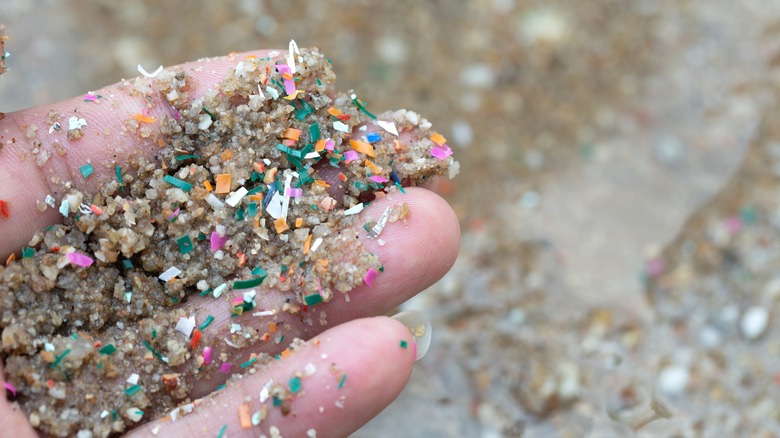One Of The Dirtiest Places On Earth Is A Hawaiian Beach With A Heartbreaking Nickname
When we think of Hawaii, we think of spectacular volcanoes, beautiful beach parks, and tons of tropical beauty everywhere you look. Hawaii's beauty and tourist-friendly areas make it an excellent place to take a vacation, but it can also make it easy to forget how humans (especially through tourism) are constantly impacting the environment there. Hawaii has conservation programs to protect wildlife and help lessen the impact of climate change, but efforts are often easier said than done. And there's one place in Hawaii where keeping the Earth clean seems like an overwhelming task: Kamilo Beach, a.k.a. "Plastic Beach."
Like California's San Bernadino, America's dirtiest city, the beach was given its nickname because of its extraordinary pollution. Kamilo Beach is most famous for the large amount of plastic waste that washes up on its shores. This plastic often contains toxic chemicals that can contaminate the water, which directly impacts both humans and wildlife. The beach is at the southern tip of the Big Island near the Ka'ū Forest Reserve, close to South Point Park. It's a rugged and remote place that is not easy to get to. In fact, the only way to access it is by driving along unpaved roads. Starting at Papakōlea Green Sand Beach (yes, it does actually have green sand due to mineral deposits) is the easiest route to get to Kamilo Beach, but note that Papakōlea is remote and rough as well.
How plastic gets stuck on Kamilo Beach (and what's being done about it)
At one time, Kamilo Beach was a place where Native Hawaiians collected wood needed for daily life. Today, about 15 to 20 tons of plastic wash up on Kamilo Beach every year, mostly because of its geographic location. This part of Hawaii lies along a strong current that is close to the Great Pacific Garbage Patch — a collection of garbage that is floating in the Pacific Ocean off the coasts of California and Hawaii. The patch is estimated to be about three times the size of France. Of course, parts of this patch break off and make their way to other areas off the coast of Hawaii, and a lot of it lands at Kamilo Beach. The plastic trash comes from all over the world, not just the U.S., and the items themselves date back decades. The enormous amount of garbage not only leaches chemicals into the water but can also be physically dangerous to animals there.
Of course, there are clean-up excursions through various environmental organizations, including Ocean Cleanup and the Hawaii Wildlife Fund. Volunteers from around the globe show up to help remove plastic and trash, which has helped, but the task of returning the area to its pristine beginnings is daunting, to say the least. That said, since 2003, the Hawaii Wildlife Fund says it has removed over 270 tons of garbage from Kamilo Beach. Those who are not afraid of being on rugged terrain and have a passion for "voluntourism" or "ecotourism" might be interested in joining local cleaning efforts. Whether you want to join a clean-up excursion or are in search of some of Hawaii's unspoiled natural beauty, check our guide on the best two-island combos for every travel style.

